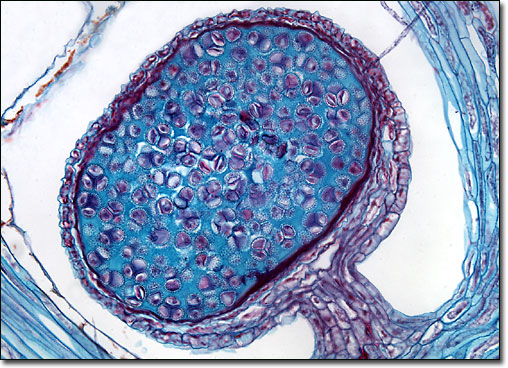|
Though typically found in modern times creeping along forest floors or tropical mountains, clubmosses were once one of the most prevalent types of plants on Earth. During the Carboniferous period, clubmosses could achieve massive heights, growing as tall as some trees and contributing greatly to the layers of organic material that would eventually develop into the coal deposits commonly used as a source of fuel today. Modern members of Lycopodium are greatly reduced in size from their ancestors, a common variety such as stag’s horn moss only growing about four inches high and ten feet long. Some types are, however, epiphytic and may be seen wrapped around the branches of trees.
|
